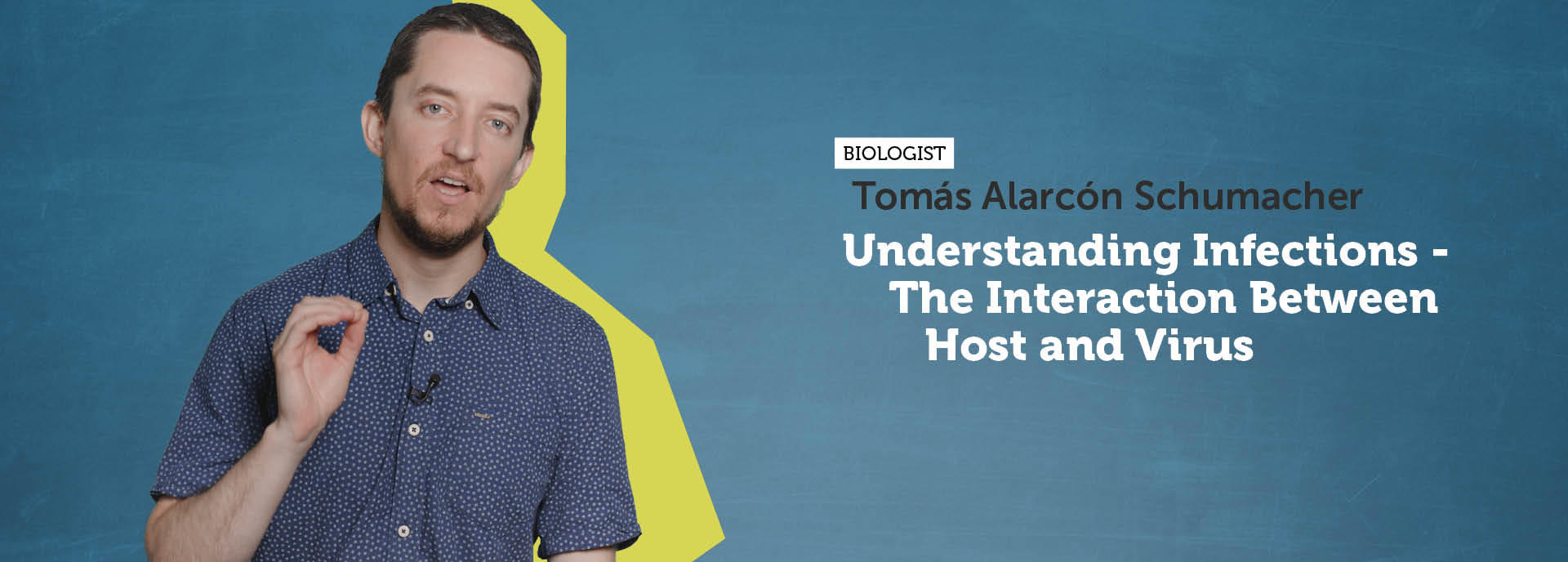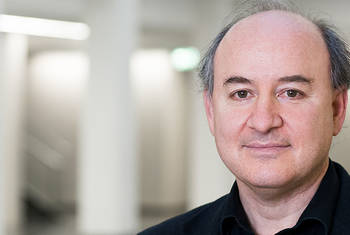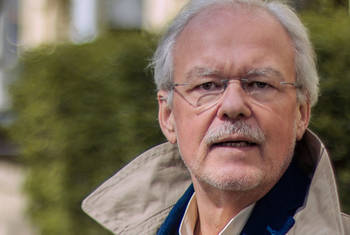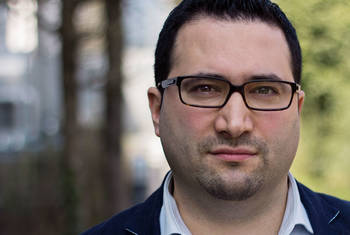Current pharmacological treatments for bone cancers like multiple myeloma have proven ineffective at healing bones or regenerating bone tissue. In this video, FRANZISKA JUNDT explores the extent to which physical stimuli and physical activity could represent effective treatment strategies for such conditions. Jundt explains how work with mice infected with tumor cells was followed up by a pilot clinical study on patients [...] Watch video
One the most common types of leukemia is chronic lymphocytic leukemia. To find the right treatment for an individual patient with that disease is a challenging task and many patients develop a resistance against the existing drugs. The purpose of the research presented by BRIGITTE VOIT in this video is to find new drugs that reduce cancer cells while not destroying other cells in the body. The researchers created two [...] Watch video
How Can Functional Magnetic Resonance Imaging Help Detect, Visualize, and Treat Strokes?
Stroke is one of the most frequent neurological disorders, befalling over 250.000 persons each year in Germany alone. The research underlying this video explores the role of non-invasive methods for stroke diagnosis and therapy. The use of functional Magnetic Resonance Imaging (fMRI), which produces image-signals on the basis of the oxygen-concentration in the blood, allows for the detection of increased or decreased [...] Watch video
How Can the Characteristics of Continuum Robots Be Optimized for a Specific Medical Application?
The use of continuum robots – robots that are not composed of rigid links and joints but are continuously bending structures – opens up completely new possibilities for surgery: With this tool surgeons can reach locations in the human body which they would not be able to reach with traditional surgical instruments. This enables them to e.g. remove brain tumors in a minimally invasive way. There are a vast number of [...] Watch video
Autism spectrum disorders are largely of genetic origin, and 5-10% of cases are currently known to be caused by a single gene mutation. Understanding the consequences of these mutations in detail can open the way for medical treatment. The study presented in this video focused on how a frequent mutation seen in patients with autism spectrum disorders causes the brain dysfunction that leads to the behavioral symptoms. [...] Watch video
Can Biosignatures Be Used to Develop a Reliable, Fast and Low-Cost Test for Tuberculosis?
Tuberculosis is still a major health issue and the number one killer of all contagious diseases. But while more than 2 billion people are infected with the tuberculosis agent, only 10% develop an active disease. Current diagnostic tests cannot distinguish between infected people and people with active tuberculosis. In this video, STEFAN H. E. KAUFMANN explains that they found a characteristic gene expression profile of [...] Watch video
Allegiance to a particular form of therapy or financial ties to a pharmaceutical company are among the phenomena that can undermine a physician’s primary goal, to provide the best possible treatment for his or her patients. In this video, KLAUS LIEB explores the ways in which conflicts of interest occur for both physicians and medical researchers before providing some suggestions as to how they might be avoided. [...] Watch video
India suffers from a high prevalence of diabetes and raised blood pressure. In this video, PASCAL GELDSETZER presents a detailed analysis of the prevalence of both conditions in India and asks how they might be better treated and controlled. Using population-based data collected by the Indian government, Geldsetzer shows that there is huge variation in the prevalence of these conditions between different Indian states and [...] Watch video
The next pandemic seems likely to result from a bacterial pathogen. In this video, ANDREAS PESCHEL explores how we can effectively fight bacterial pathogens, especially where they are resistant to antibiotics. Adopting an interdisciplinary approach with colleagues from computational, clinical and compound focused sciences, Peschel’s research focuses on the bacteria Staphylococcus aureus commonly found in the human nose. [...] Watch video
Unlike other human infectious diseases (e.g. tuberculosis, HIV), malaria is transmitted between humans via mosquitoes. In this video, ELENA LEVASHINA analyzes the mechanisms of how mosquitoes transmit malaria. Combining population studies conducted in the field with mathematical approaches, Levashina finds that mosquitoes with particular genetic characteristics transmit malaria more effectively than others. Though further [...] Watch video
Can Biosignatures Be Used to Develop a Reliable, Fast and Low-Cost Test for Tuberculosis?
Tuberculosis is still a major health issue and the number one killer of all contagious diseases. But while more than 2 billion people are infected with the tuberculosis agent, only 10% develop an active disease. Current diagnostic tests cannot distinguish between infected people and people with active tuberculosis. In this video, STEFAN H. E. KAUFMANN explains that they found a characteristic gene expression profile of [...] Watch video
Which Functions Do the Noncoding Parts of Human RNA Have in Metastasis Formation of Lung Cancer Cells?
Parts of the human RNA that are not translated into proteins may still have an important function. As SVEN DIEDERICHS explains in this video, the occurrence of the RNA gene Malat-1 makes the difference between lung cancer with and without metastasis. By first identifying Malat-1 as the molecular difference between patients and then silencing this RNA gene, it was found that Malat-1 could be a viable target to suppress [...] Watch video
Our skin epidermis consists of many lifelong regenerating cell layers which provide a barrier that prevents water loss and protects us from heat and radiation. In this video, CARIEN NIESSEN explores why these cells fail to regenerate in cases of disease or with age. Paying particular attention to the influence of cell structure, Niessen’s method focuses on three scale lengths: protein, cell and organ. Outlining the ways [...] Watch video
The research presented in the video investigates how endosomes are able to transport material back to the cell surface in a process called recycling or endosomal exocytosis. In order to do so, endosomes have to have their own identity which is defined by a phosphoinositide, Phosphatidylinositol 3-phosphate (PI3P). To deliver the material to the cell surface the endosomes have to get [...] Watch video
Multicellular organisms first took their place in the evolutionary chain some 450 million years ago. In this video, THOMAS BOSCH seeks to extend our understanding of how human and animal bodies function via analysis of these ancient creatures. Focusing on the freshwater polyp Hydra and employing techniques including molecular cell biology, modern sequencing technology and in depth study of stem cell behavior, Bosch argues [...] Watch video
Our immune system has evolved many different cells with different functions to prevent infections. One of these functions is cellular cytotoxicity; this means that cells are able to kill other cells. Natural killer cells (NK cells) are one type of these cells that can achieve cytotoxicity. CARSTEN WATZL experiments with NK cells in order to find out how they protect themselves from their own cytotoxic machinery and how [...] Watch video
Streptococcus pneumoniae kills millions of people worldwide. For the subgroup serotype 8, prevalent in the United States and Western Europe, there is no vaccine to date. In this video, PETER H. SEEBERGER explains the approach of his research group to create a synthetic sugar vaccine against this bacterial infection that works in mice. They relied on synthetic chemistry to assemble sugar chains from monomers; the [...] Watch video
How Do Cells Form Compartments and How Is this Related to the Onset of Neurodegenerative Diseases?
Molecules in cells are not randomly distributed but form compartments that perform specific functions. A few years ago, scientists discovered that many of these compartments develop by the process of phase separation which results in liquid-like compartments. This is the case for stress granules – drops formed by the cell when it is under stress, e.g. from heat or chemicals. As ANTHONY A. HYMAN explains, it has been [...] Watch video
The gut microbiome has a significant influence on various diseases ranging from malnutrition to chronic inflammation. It is largely shaped by environmental factors, like diet and lifestyle. How the genetics of the individual affect the composition of the microbiome, however, was largely unknown. RUTH LEY explains in this video that the research team addressed this question by comparing the microbiome of over 1000 twin [...] Watch video
How Can Biomaterial Scaffolds Help to Repair Damaged Spinal Cords by Guiding Nerves to Grow Across the Injury?
In the 1980s researchers showed that damaged nerves in the spinal cord have the ability to regrow. Chemical engineers contribute to the field of spinal cord repair by developing biomaterial scaffolds that support cell and nerve growth inside the body after an injury. In the research project explained by LAURA DE LAPORTE in this video, such scaffolds were developed and tested: The special architecture of the developed [...] Watch video
Knowledge of medical treatments is usually not equally distributed between physicians and patients. Often, doctors need to analyze the available data in the medical domain and then communicate the results about possible options to the patient. MARKUS A. FEUFEL has focused his research on the challenge of this communication. As he describes in this video, his research team found that it is not only the patients who have [...] Watch video
Only in the last decades research found that experiences change the human brain. The research presented in this video deals with the question how making music reorganizes neural pathways in the brain. In a comparative study of brains of pianists who started playing early in life with those of pianists who started later and those of non-musicians ECKART ALTENMÜLLER found significant differences: Among others, the brain [...] Watch video
The technique of Magnetic Resonance Imaging, or short MRI, is a useful and widely used tool in clinical diagnostics. However, the current MRI techniques are not sensitive enough to detect low concentrations of drugs or disease related molecules. LEIF SCHRÖDER explains that MRI is typically based on the detection of water molecules. However, the high water concentration that is always present in the body creates a strong [...] Watch video
T cells are an important component of the body’s immune system. As ERIKA PEARCE explains, there are several types of T cells which form consecutively during the immune response and serve different purposes. Effector T cells combat pathogens from infections or tumors while memory T cells provide protective immunity to prevent re-infection or reoccurring cancer. The research presented in this video investigates how the [...] Watch video
High-level athletes, such as basketball and volleyball players, show more than fifty percent prevalence of developing tendinopathy – an injured tendon – compared to the normal population. The researchers around ADAMANTIOS ARAMPATZIS assume that the reason for this could be the dysbalances in the adaptation between muscle and tendons. As he describes in this video, the researchers measured and compared the [...] Watch video
Which Antigenic Determinants Can Be Used for Therapeutic Vaccinations Against HPV-Mediated Cancer?
The research presented in this interview pursues the goal of developing a therapeutic vaccine against cancer induced by human papillomavirus (HPV). As ANGELIKA RIEMER explains, the project identified T helper epitopes to enhance existing vaccines and led to the identification of five valuable candidates for inclusion into a therapeutic HPV vaccine. This was accomplished via a computer-based analysis of already existing [...] Watch video
Vital steps have been taken in recent years in our understanding of how the cerebral cortex functions at the cellular level. In this video, MATTHEW LARKUM analyzes the role that memory plays in this context. Employing techniques including electrical and optical recordings as well as chemogenetics in experiments with live animals, Larkum’s lab has demonstrated that the medial temporal lobe projects to layer one of the [...] Watch video
Almost everybody has to deal with stress sometimes. But what is stress? It is a reaction of the body to a challenging situation which elicits a stress response in the body. Stress is also a risk factor for disease and this is an area that MATHIAS V. SCHMIDT and his research team focus on. The most prominent stress-related disorders are psychiatric disorders and metabolic disorders. Specifically, as Schmidt explains in [...] Watch video
All cells in our bodies contain the same genetic information. Yet, these cells make up very different parts of the body like liver, heart, and eyes. This is achieved by expressing certain genes and inactivating others. The protein MOF is known to play an important role in this process: DNA does not flow freely in the cell nucleus but is packaged by histone proteins. There, MOF facilitates reading the genetic information [...] Watch video
How Can We Improve the Existing Vaccine for Tuberculosis to Combat the Growing Number of Multi-Resistant Strains?
Each year 1.5 million people die of tuberculosis thus making it the number one killer of all contagious diseases. With the number of multi-resistant tuberculosis growing, currently available treatments are no longer as effective as they used to be. The existing vaccine does not protect against pulmonary tuberculosis which is the most common form of the disease and easily transmittable. In this video, STEFAN H. E. KAUFMANN [...] Watch video
What Do We Know About the Potential of Endothelial Cells in Treating Acute Lung Injury?
A positive outcome of an acute lung injury, a by-product of sepsis, is closely linked to a repair process in which endothelial progenitor cells are involved. These cells derive from the bone marrow and circulate in the blood stream. In the past ten years a lot was published on endothelial regeneration. The paper presented in this video aims at bringing together this research to create an overview of what has been achieved [...] Watch video
Why are some people more prone to sickness than others? Individual people differ in their genetic predisposition to disease. TOBIAS LENZ and his research group investigate whether historical selection by pathogens – by infectious agents – has shaped the genetic makeup of our immune system today. Their specific focus here is on whether selection by pathogens on specific immune genes, so-called HLA genes, has affected [...] Watch video
Is the Course of a Sepsis Influenced by the Mobilization of Endothelial Progenitor Cells?
Sepsis is a common disease in intensive care. Under this condition the body reacts to infection by injuring its own tissues and organs which leads to high mortality rates. Until now reliable methods to identify vulnerable patients are lacking, and treatment is mainly directed at its symptoms. The research presented in this video focuses on endothelial progenitor cells, a cell type derived from the bone marrow circulating [...] Watch video
Which Neural Mechanisms Are Taking Place During Social Interaction of Individuals?
The studies presented in this video show that a focus on social interaction in neuroscience helps to examine the neural mechanisms that are at work in human brains during social interaction. Using a combination of fMRI and eye-tracking, the brain activity during social interaction is observed. As LEONHARD SCHILBACH explains, intact brain mechanisms reward social interaction and thus evoke intrinsic motivation. The new [...] Watch video
Mankind is increasingly polluting the atmosphere across the planet. The research detailed in this video is interested in the questions of how this pollution is generated and how it affects the health of people. The investigators found, as JOS LELIEVELD explains, that air pollution leads to millions of premature deaths since it causes, for instance, fatal cerebrovascular and respiratory diseases. The researchers also [...] Watch video









































